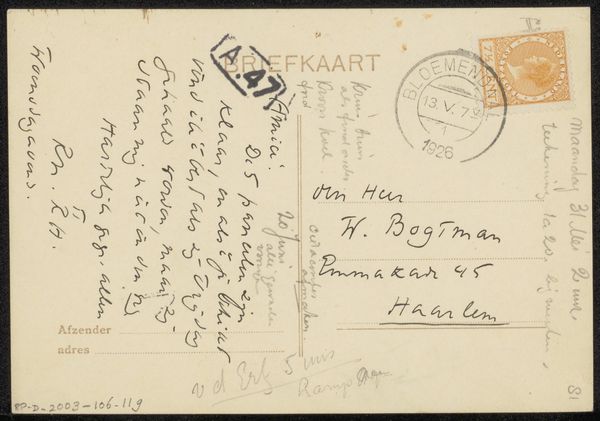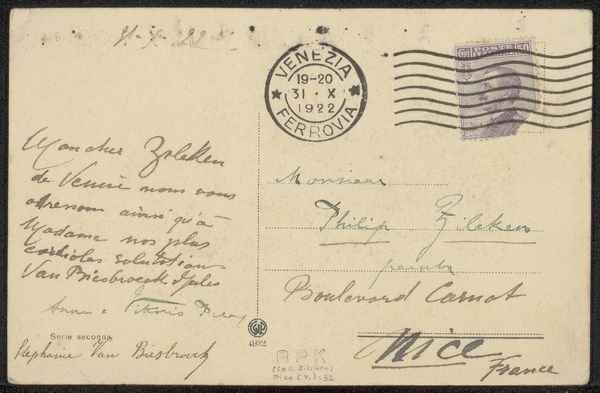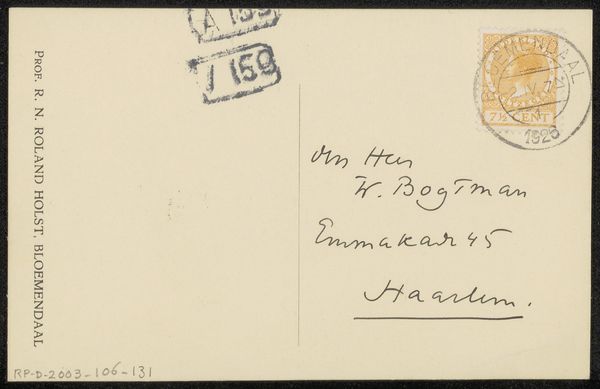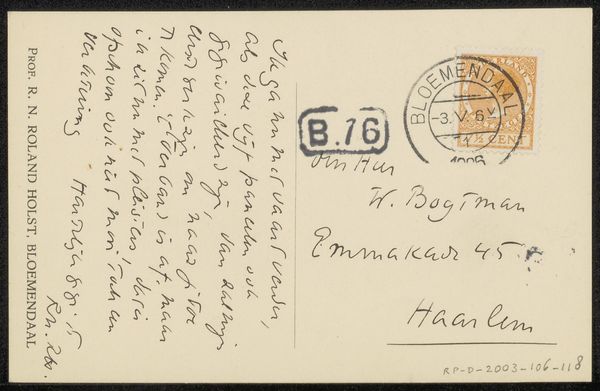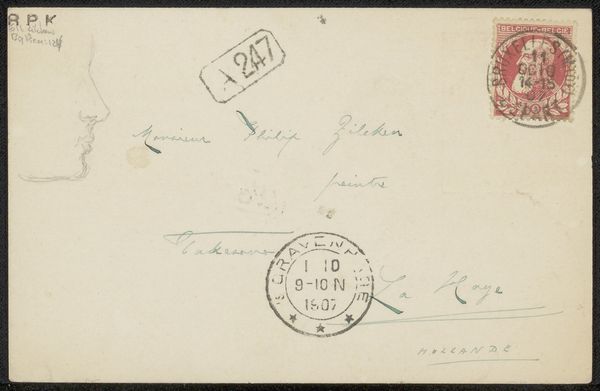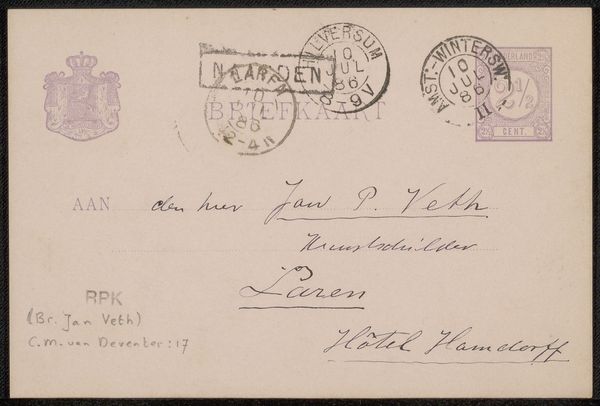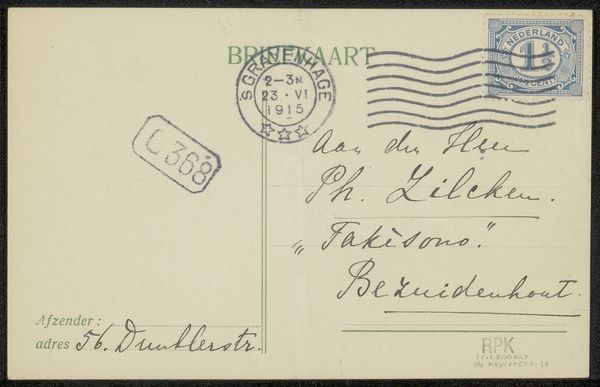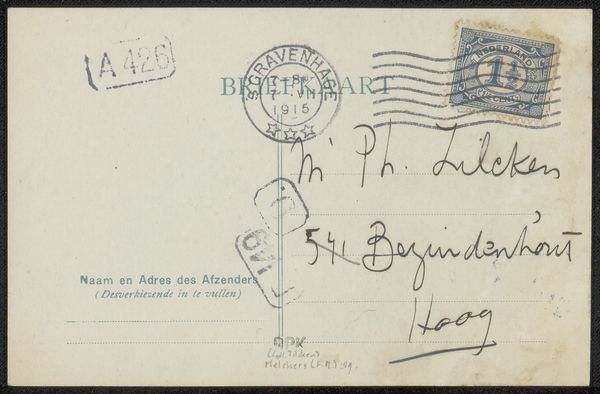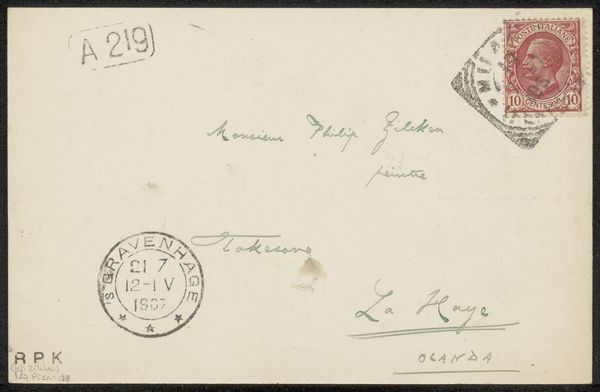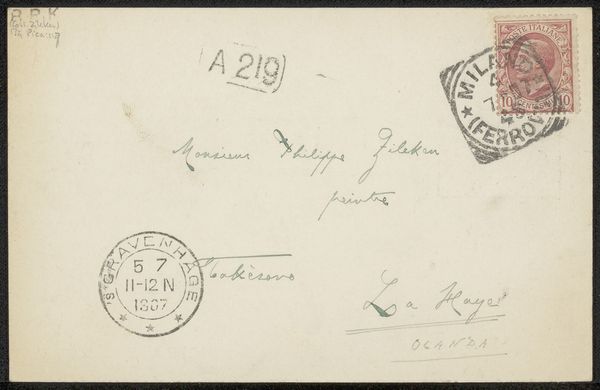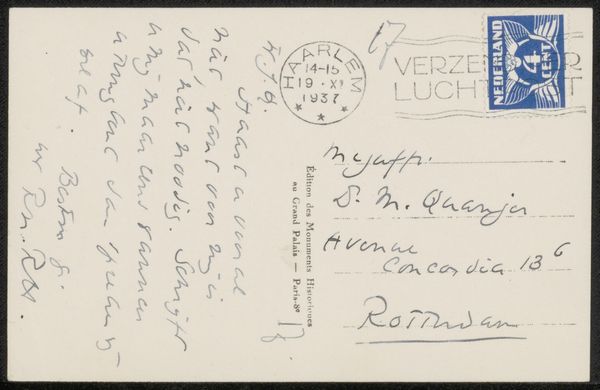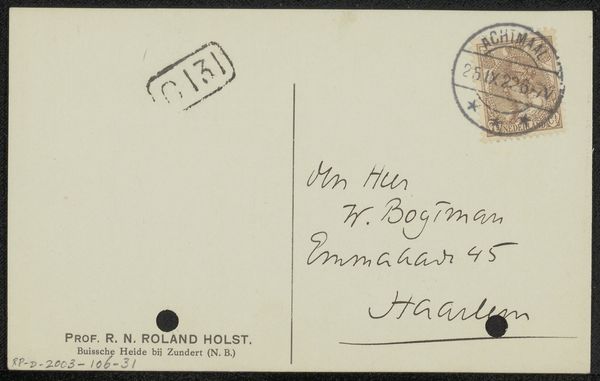
Copyright: Rijks Museum: Open Domain
Curator: Looking at this modest mixed-media piece by Bernard Eilers, titled "Briefkaart aan Willem Bogtman," which dates back to 1929, one immediately gets a sense of a bygone era, wouldn't you agree? Editor: Absolutely. The sepia tones, the calligraphic flourishes—it speaks volumes even before considering the details. It's nostalgic, certainly, and gives off the feeling of looking into the past through someone’s intimate communication. A snapshot of an older, more decorative aesthetic? Curator: Precisely. Eilers, as indicated by the card's design, operated a "Kunst- en Reproductie Fotografie"—an art and reproduction photography studio. Note how even his logo and address at Amstelveenscheweg 83 are designed for maximum recognizability. What do you make of the Post-Impressionist element? It feels subdued but undeniably there. Editor: Well, the attention to script and the almost illustrative details certainly put a personal stamp on something so quotidian. But for me, it's not so much the style but its status as ephemera that draws me in. It speaks to the politics of the everyday. These types of items have always existed at the periphery of society until it's determined to have worth in a formal collection like this one. Curator: Indeed, there is so much social history wrapped up in an object like this, even beyond the aesthetic appeal. Looking closer, the card is addressed to "W. Bogtman," care of "gebrand glas in lood", indicating that the recipient was most probably a glass painter in Haarlem. The visual symbols of correspondence - stamp, postmark - carry echoes of shared visual experience in this way. Editor: I agree. And thinking about Eilers's profession gives added depth; he isn't merely sending a note, he's demonstrating his craftsmanship, using the everyday task of mailing a letter as an opportunity for self-advertisement. The address rendered with such ornate care; it elevates even commercial endeavor to art. The very act of producing "reproductie fotografie," to me suggests, at once, the democratization and marketisation of art. Curator: It's as though Eilers were already considering its status as a cultural artifact! It underscores that every generation uses shared symbolic visual languages to build bridges through time, to send messages we keep interpreting. What a perfect lens through which to look at Amsterdam then. Editor: Exactly. To consider a piece of mail as consciously crafted not just for personal exchange but for enduring presence – that redefines how we look at these ostensibly small historical markers. It is fascinating how we are conditioned by sociopolitical context and values, giving merit and elevating these items into visibility in our cultural institutions.
Comments
No comments
Be the first to comment and join the conversation on the ultimate creative platform.
